Avanti West Coast’s first Hitachi ‘Evero’ bi-mode trains entered passenger service on June 2. Ben Jones takes a close look at the new Class 805s to see what they will deliver for passengers between London and North Wales.
Rolling stock engineers and operators know from long (and sometimes bitter) experience that no amount of testing can ever completely prepare them for what happens when their precious new train encounters the travelling public.
Avanti West Coast’s first Hitachi ‘Evero’ bi-mode trains entered passenger service on June 2. Ben Jones takes a close look at the new Class 805s to see what they will deliver for passengers between London and North Wales.
Rolling stock engineers and operators know from long (and sometimes bitter) experience that no amount of testing can ever completely prepare them for what happens when their precious new train encounters the travelling public.
Avanti West Coast and Hitachi Rail Europe had their latest taste of that in early June, when the first Class 805 ‘Evero’ bi-mode trains were introduced on the London-North Wales route (RAIL 1011).
Officially, the ‘EV’ of the new brand name highlights the environmentally friendly credentials of the new fleet, while ‘e vero’ is Italian for ‘It is true’ - a nod to Avanti’s 30% Italian parentage.
The first few weeks of any new train fleet are undoubtedly a nail-biting moment of truth for all concerned, and Avanti’s launch on June 2 was deliberately low-key - a stark contrast to the pyrotechnics, celebrities and town criers of Virgin’s West Coast launch events in the 2000s.
A sign of nervousness? Or possibly a symptom of very different times, both on the railway and for the country at large.
A few days after the first fare-paying passengers were welcomed, RAIL sampled what the Class 805s have to offer on a crew-training run from London Euston to Crewe and back, with ‘box fresh’ 805011.
Although there were no passengers, the trip allowed us to meet Avanti staff and project managers to hear their opinions, take a thorough look through the entire train, and to experience it in both electric and diesel modes.
Powering silently out of Euston at 1205 ‘on the dot’, the exceptional acceleration of the Class 805s is immediately apparent.
Avanti says that from a standing start, a Class 805 in electric mode can reach 52mph in just 30 seconds - double the 26mph that a Class 390 can manage in the same time.
Unfortunately, a tortuous route out of Platform 15 and signal checks mean that those capabilities can’t be immediately exploited on our run. But the absence of noise and vibration from the 750hp Cummins QSK19s under the floor is a welcome change from the Class 221s.
While the three intermediate Motor Second (MS) cars do also have powerful MTU diesel generator packs under the floor, they won’t be required until later.
Elimination of diesel working under the wires between London and Crewe was one of the primary reasons for the procurement of the ‘805s’. As well as improving the passenger experience, replacing the ‘221s’ removes the last timetabled diesel-only trains from Euston, helping to reduce air pollution at various other stations, including Birmingham New Street. AWC says it will eventually lead to a 61% reduction in its annual carbon emissions.
The diesel generator packs feature a cleaner, Euro 5-compliant MTU diesel engine that is physically larger than its predecessors in the Class 800/802 bi-mode units, but which has a similar power output.
Experience gained with the Class 80X power packs since their introduction in 2017 has prompted modifications to improve their resilience and reliability on the ‘805s’.
Unlike the GWR Class 800/802s, Avanti’s trains will not be expected to run in diesel mode at high speed over long distances. West of Crewe, maximum line speeds rarely exceed 75mph and the trains are configured to suit frequent stops and lower speeds.
There have been murmurs of discontent from some quarters about the ‘805s’ (and shortly the Class 807s) being limited to 110mph on the West Coast Main Line, despite their 125mph maximum speed.
Services worked by ‘805s’ are currently timed at a maximum of 110mph, although Avanti claims that the superior acceleration and braking performance of the new trains will overcome any disadvantage at the ‘top end’.
A lack of tilting equipment means that they cannot match the speeds of Class 221s and Class 390s through the curvier sections of the WCML, but Avanti is currently working with Network Rail to establish differential speed limits for the ‘390s’ and other high-speed multiple units (including the ‘805/807s) at various points.
In some places, this will raise line speeds for the new trains to 115mph or 120mph. Evidence of this are the dozens of newly installed and (currently) bagged-over speed limit signs along the route.
Noise levels inside the cabin are excellent in electric mode - the most noticeable sound is the air-conditioning equipment on a pleasant, but by no means hot, June day.
North of Stafford, we ran in diesel mode on our trip, and the engine noise from below the floor of the MS vehicles was ever-present but not overwhelming, despite the MTU engines working hard during our 110mph sprint to Crewe. As you’d hope on a brand new train, vibration was minimal compared with a 20-year-old Class 221.
On our test run, the ride quality over the heavily used southern section of the WCML was excellent. Class 805s have the heavier outside frame bogies on all cars, which in this passenger’s experience offer a better ride quality than the less substantial inside bearing bogies used on the trailer cars of the Class 800/801s.
Avanti staff and drivers we spoke to during the test trip were pleased with their new trains - particularly the sparkling performance, modern safety features and the bright, clean passenger environment.
Despite their strong family resemblance to earlier Hitachi trains, the ‘805s’ feature a wide range of technical updates and are regarded as the fourth generation of the Class 80X family.
One of the trickiest challenges for the development team was to integrate Avanti’s new passenger infotainment system with the Hitachi train management system (TMS).
Although the two systems are separate, they have to work together, and making the software stable and reliable has been “very challenging”, according to Avanti Senior Project Manager Greg Newport.
Software issues delayed the introduction of the fleet by several months, and work was continuing in June to roll out ‘patches’ and updates across the 13 trains to eliminate glitches and make the systems more stable.
“Fortunately, the first week has been generally quiet. We’ve seen the odd teething problem, but nothing serious,” says Newport.
Digital systems are far from the only update. Components such as the carpets, seats and lighting are all new, although regular Avanti users will recognise the overall design concept of the interiors from the refurbished ‘Pendolino’ sets.
“We’ve tried to give a consistent look and feel with the refurbished Class 390s,” says Newport. “Standard Class seats are a hybrid of those used in the Lumo Class 803s and the Pendolino.”
AWC Fleet Delivery Manager Russell Preece adds: “It’s largely a proven Hitachi product, so technical issues have been few. But we had to ensure that standard items such as the doors and cameras were tested and functioning correctly before they entered service.
“Each set has to complete 1,500 miles fault-free before acceptance. So far, we have six sets for passenger diagrams, three sets [now four] for testing, and three awaiting acceptance. If driver training has progressed sufficiently, we should also see the first Class 807s enter service in July.
“Software testing and modifications continue, though, as does 12-car testing for recovery purposes. The Class 805s and ‘807s’ won’t work in multiple except to clear the line in an emergency.”
The ‘Evero’ fleet is cleared for all main Avanti routes and diversionary routes, with the exception of Manchester-Preston via Bolton, which will be checked and cleared for the trains before they start regular operation to Preston and Blackpool.
Although intended for North Wales services, the ‘805s’ are expected to work to Blackpool alongside the ‘807s’. And both types will work services via the West Midlands as well as the more direct Trent Valley route to Crewe.
Anyone familiar with the Hitachi Class 80X trains used by other operators will recognise much of the layout on the AWC sets, although they are by no means identical.
Stepping in from the platform, the vestibules and internal arrangement are very similar to existing ‘80X’ vehicles.
Moving through to the passenger saloon, the immediate impression is of a bright and airy space with a clean (but not cold) finish. Saloon lighting is a big improvement on the oppressive ‘interrogation lights’ of the LNER and Great Western Railway Intercity Express Trains, with a warmer, more restful tone complementing the blue and white of the seats.
First Class is housed in the unpowered PDTF (Pantograph Driving Trailer First) driving vehicle, along with a small food preparation galley occupying the equivalent of two seating bays.
The 25 seats are arranged in 2+1 format with a table at every seat. Of those, 12 are grouped around three tables for four people, two are companion seats for the wheelchair space, five are solo airline seats, four are face-to-face single seats, and finally a pair of side-by-side airline seats.
The three seats next to the galley area do not have windows - fine if you’re planning to work or watch a movie, but not if you enjoy watching the scenery fly by. Select your seat carefully!
The seats themselves are firm but not uncomfortable, with attractive blue upholstery and leather headrests. You wouldn’t know, as there’s nothing to indicate it, but the seats can be slightly reclined by releasing a small lever on the front of the seat cushion base.
Seat numbers on the aisle seats include a Braille option to assist partially sighted or blind passengers. The PDTF vehicle also houses one of two accessible toilets with powered sliding door.
Between the driving cars are three Motor Standard (MS) vehicles, each of which has a diesel generator pack under the floor and a slightly raised floor to accommodate it. As a result, the seats are positioned slightly higher in relation to the windows in the intermediate vehicles.
Again, the Giugiaro-inspired interior design is dominated by a stylish blue and white colour scheme similar to the refurbished ‘Pendolino’ fleet. Standard Class seats are arranged 2+2 with many grouped into tables of four.
Over the whole train, 51% of seats have fixed tables - a significant increase over the Class 221s, which only have 34% of seats around tables (86 of 256 seats). Each ‘805’ has 299 seats, a 16% increase over the Class 221s owing to the longer 26-metre vehicles.
Standard Class seats are less generously proportioned than First Class, but they have a better headrest which is ideal for a quick doze.
Again, the seats are firm but nowhere near as unforgiving as GWR’s IET seats. I found them comfortable for a journey of a couple of hours to Crewe. As with any seat, the real test will come in a couple of years and how they survive daily use by thousands of passengers.
Airline seats in Standard Class have decent legroom and a flip-down table. A useful addition is the small, dimmable reading light built into the seat back above each table.
Prominent on all fixed tables in both classes are two clearly marked wireless charging points for smartphones, similar to the refurbished Class 390s. I found that these worked well, although the charging rate was slower than the USB sockets.
Every pair of seats in Standard Class has access to one standard UK three-pin plug socket and two USB charging sockets for electronic devices, while every First Class seat has a plug socket and USB sockets.
Tables for four have a bank of charging points built into the wall below the window, plus further sockets between the seats in First Class. Standard Class airline seats have sockets under the seat base.
Five-car ‘Evero’ sets are lettered A-B-C-D-J when running solo. This changes to A-B-C-D-J+L-M-N-P-K when running as a ten-car train. Avanti’s logic is that First Class is then always located in coaches J and K, as per its ‘Pendolino’ sets - although of course the two First Class vehicles are separated in a ten-car Class 805.
External passenger information displays are configured to match the formation of the train, displaying the coach letter, destination and a scrolling list of calling points. Unlike earlier Class 80X trains, the displays use white LEDs rather than orange, making the text clear and easy to read.
Accessible toilets are provided in Coaches A and J, adjacent to the wheelchair spaces, and feature a ‘discreet entry’ mode for carers. Smaller toilets of similar design to previous Hitachi Class 80X trains are located in Coaches B, C and D. All five toilets have baby changing facilities.
Coach A is a Standard Class driving vehicle without diesel generator pack, offering a smooth and quiet ride in both electric and diesel mode.
Motor Standard (MS) Coach B includes the small shop selling hot and cold drinks and snacks, similar to LNER’s Class 800/801s. In what is thought to be a first for a British train, there’s a free filler point for passenger water bottles next to the shop - a very welcome addition to reduce single-use plastic bottles.
Coaches C and D make up the remainder of the set, housing up to 84 seats each.
A ‘traffic light’ reservation system is used throughout the train, similar to other Class 80X trains but with a slightly updated appearance. Green means a seat is free, red means reserved.
In mid-June, six Class 805 sets were diagrammed Monday-Friday, working 14 trains a day - including some turns running as pairs between Chester and London.
Ten sets had been accepted by AWC (805001-005/008-012), leaving just 805006/007/013 to join the fleet. Of those, 805013 was expected to be accepted in late June, with the final pair following in mid- to late summer once testing is complete.
Their introduction has allowed AWC to start returning Class 221s to Beacon Rail, with some cascaded to boost capacity on CrossCountry routes. However, a handful of ‘221s’ will remain with Avanti until late 2024, after which all North Wales services will be in the hands of the Class 805s.
With electrification of the North Wales Coast line once again unlikely in the foreseeable future (RAIL 1011), despite government promises to reallocate HS2 cash, the Class 805s will at least bring electric train performance to the Crewe-Chester-Holyhead/Wrexham route, even if those traction motors are powered by diesel engines west of Crewe.
From a passenger perspective, Avanti’s new ‘Evero’ trains should deliver a noticeable upgrade over their predecessors - not just in terms of a quieter, more pleasant travelling environment and up-to-date equipment such as the charging points, but also in providing more seats, reducing diesel operation on electrified main lines, and reinforcing rail’s credentials as a cleaner and greener form of travel.
Meet the ‘Evero’ fleet
After winning the West Coast Partnership franchise deal in 2019, FirstGroup and Trenitalia announced that they would invest in 23 new trains to boost capacity and eliminate diesel operation under the wires.
Hitachi Rail Europe was awarded a £350 million contract to supply 13 five-car bi-mode trains to replace the existing Class 221 ‘Super Voyager’ diesel-electric multiple units for North Wales. plus ten seven-car electric multiple units (EMUs) for the Liverpool/Blackpool routes (135 vehicles).
Financed by Rock Rail West Coast (a joint venture of leasing company Rock Rail and Standard Life Aberdeen), the 23 trains were originally expected to be in service in 2023. They will all be based at Alstom’s Oxley depot in Wolverhampton and maintained by Alstom/Hitachi.
Externally very similar to other Hitachi Class 80X trains, the Class 805s and ‘807s’ feature a number of technical updates over their predecessors, which have contributed to their delayed introduction (see main text).
Class 805 assembly started in 2020, and by June 2022 the first set was ready for static testing at Newton Aycliffe. Main line testing started in February 2023 and will continue as the remaining sets are prepared for entry into traffic over the summer.
Production of the Class 805 and ‘807s’ was shared between Hitachi’s Kasado plant in Japan and Newton Aycliffe in the UK, with the latter manufacturing 56 of the 135 aluminium bodyshells.
The Class 807 EMUs are similar to LNER’s Class 801s in having just one diesel power pack, allowing them to continue at low speed in the event of disruption to overhead power supply.
They will support Avanti’s existing Class 390 Pendolino fleet, increasing the number of seats available on its West Coast Main Line services. Each seven-car train will offer 453 seats (49 First Class, 404 Standard).
Class 807 testing is also ongoing ahead of a possible debut in July, if enough drivers are trained in time.
For full versions of articles like this, complete with detailed photography, Subscribe today and never miss an issue of RAIL. With a Print + Digital subscription, you’ll get each issue delivered to your door for FREE (UK only). Plus, enjoy an exclusive monthly e-newsletter from the Editor, rewards, discounts and prizes, AND full access to the latest and previous issues via the app.
Login to continue reading
Or register with RAIL to keep up-to-date with the latest news, insight and opinion.



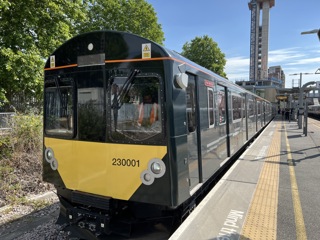
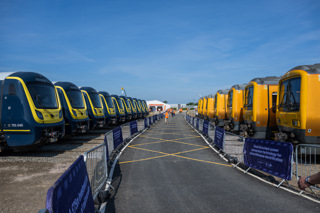
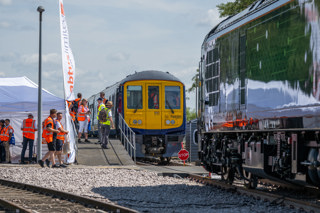
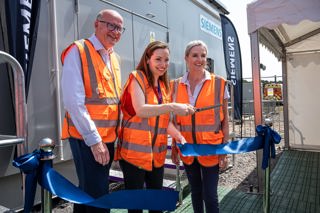
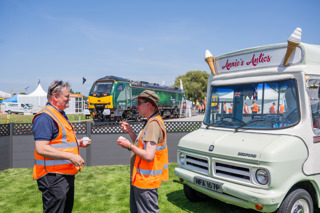











Login to comment
Comments
No comments have been made yet.